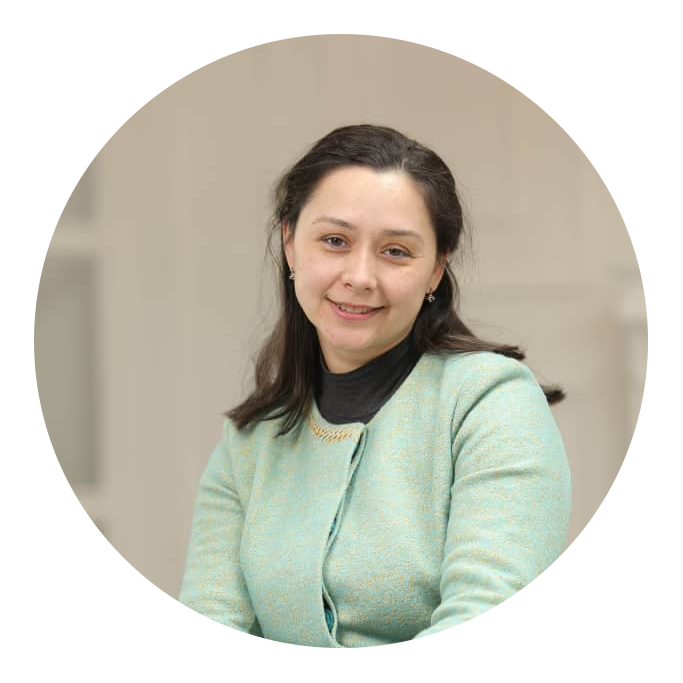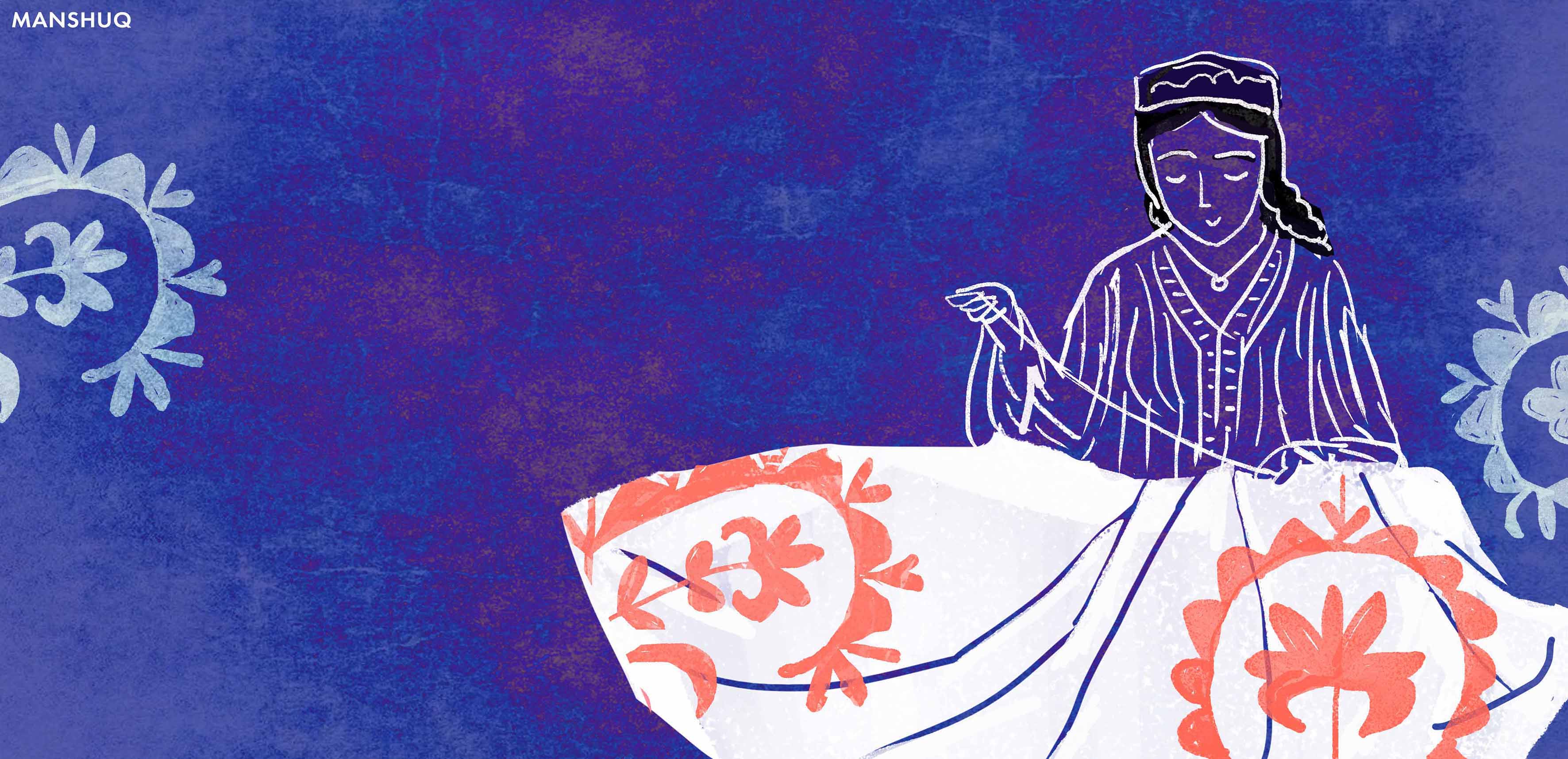Master embroiderer Munira Akilova: "Every craftswoman’s suzani contains her own philosophy"
Mehrangez Tursunzoda
November 12th, 2020
At the same time, I’ve been comfortable with needles since I was a kid. My grandmother used to sew, and my mother worked at the university and in her free time she cut fabric and sewed clothes. Embroidery was something I mastered myself.
One of the reasons why I left teaching was problems with my health. Why did I choose embroidery? Because that’s what helped me. Based on my own experience, I became convinced that art therapy had the power to heal. That same year I went back to school to get a degree in design and graphics. Now I work as an expert in tourism and handicrafts for the Zarafshan Association for Tourism Development. The fact that I know economics and have experience as a teacher is a big help.
Before, mothers and grandmothers who’d create suzani would “embroider wishes” for their daughters. When women embroider suzani, they always leave a piece of unfinished linen, so that the young craftswoman can continue the work, playing her part in the almost finished work of the elder embroiderers. This folk tradition is not only about continuity between generations; it’s also a kind of wish that weddings in the family shall never stop.
Traditions are better preserved in the provinces than in the cities. In Penjikent, for example, large suzani embroideries are still preserved, because suzani are still an obligatory component of dowries in that region. In the small village of Urmetan in Aini District, where an embroidery center was set up as part of a project, hand-made lint-free carpets called shol are still woven. Again it’s because these carpets are a required part of the bride's dowry in that area. So these crafts are preserved when traditions are observed.
With suzani, it’s not only the delicacy of the stitch that matters, but also the colors and patterns. Red represents fire, for example, while brown represents the earth and white represents the air. And with embroidery there should always be one line left incomplete, as a sign that only God can create something perfect.
In Penjikent, you can find a unique pattern called sitora, which looks like stars in the sky. You can also find the pattern panja, which is said to ward off trouble and the evil eye.
But, unfortunately, a lot of works now are just butchered. Our craftswomen aren’t interested in symbolism. If you look at the carpets that our grandmothers used to sew, for example, and compare them to what’s being woven now, it’s the difference between heaven and earth. The difference is huge, from the processing and dyeing of the wool itself to the quality and delicacy of the patterns. Now people say we’re in the era of technology, but, unfortunately there’s a paradox - technology gets better while the quality of handmade products is deteriorating. A lot ends up getting lost.
There’s also a difference between symbols that are female and those that are male. And often people unknowingly use female symbols in men's clothing, or they put symbols in places they shouldn’t be. This has to be taken very seriously.
That’s why when we have training sessions at our center Armugon, we always hold classes on product development, drawing forms and the history of ornamental patterns so that people know what it is they’re embroidering.
Our craftsmen need to go to museums more often, create their own collection of patterns for their works, and then work around that. There’s no need to copy anyone.
In my training sessions about traditional crafts, I always say that today people don’t buy things, they buy stories. And people want to know the real story, not a fictional one.
Craftsmanship is not really compatible with business, at least as it’s practiced today. That’s why you have to figure out what it is you want - do you want to have a business or preserve your traditions? What does craftsmanship mean to you - is it just making products, or is it about the process of reviving history?
In 2014, the Armugon Crafts Center applied for a certificate of excellence from UNESCO. This was the first step to establishing ourselves in international markets, and we’ve made some permanent partners. In addition, our center’s team has participated multiple times in different fairs and exhibitions. There’s a demand for products, but everyone knows that working by hand isn’t cheap. All the products we manufacture are of a very high quality.
Last November, I entered my own works in the second Tashkent International Biennale of Applied Arts. I got first place out of masters from 13 different countries. It’s very difficult to compete in embroidery, I didn’t expect it at all, and I’m very proud of this victory.
The President of Tajikistan declared that 2018 would be the Year of Tourism and the Development of Traditional Crafts. That’s when many craftswomen started to appear.
Somehow a woman came to our workshop who wasn’t able to give birth. She didn’t know how to sew at all. When I would give her tasks to do, all the colors that she chose for her embroidery were dark; all her work turned out to be dark. We talked a lot about her problems and the influence that color could have on your subconscious. Gradually, everything began to change - both her inner world and her work. Thanks to the craft, she simply had a smile on her face. Over time, she was able to buy herself a sewing machine and now she continues to sew and embroider in Penjikent.
Now I’m working on a book which aims to revive the production of traditional Tajik skullcaps. For each skullcap, there’s a diagram of how to make it. I hope it will be published by the end of the year. My other goal is related to my own personal suzani. I’m planning to embroider several works for my personal exhibition. But my most cherished dream is to create a design school where people can come and unleash their creativity.
Translation by Dennis Keen


